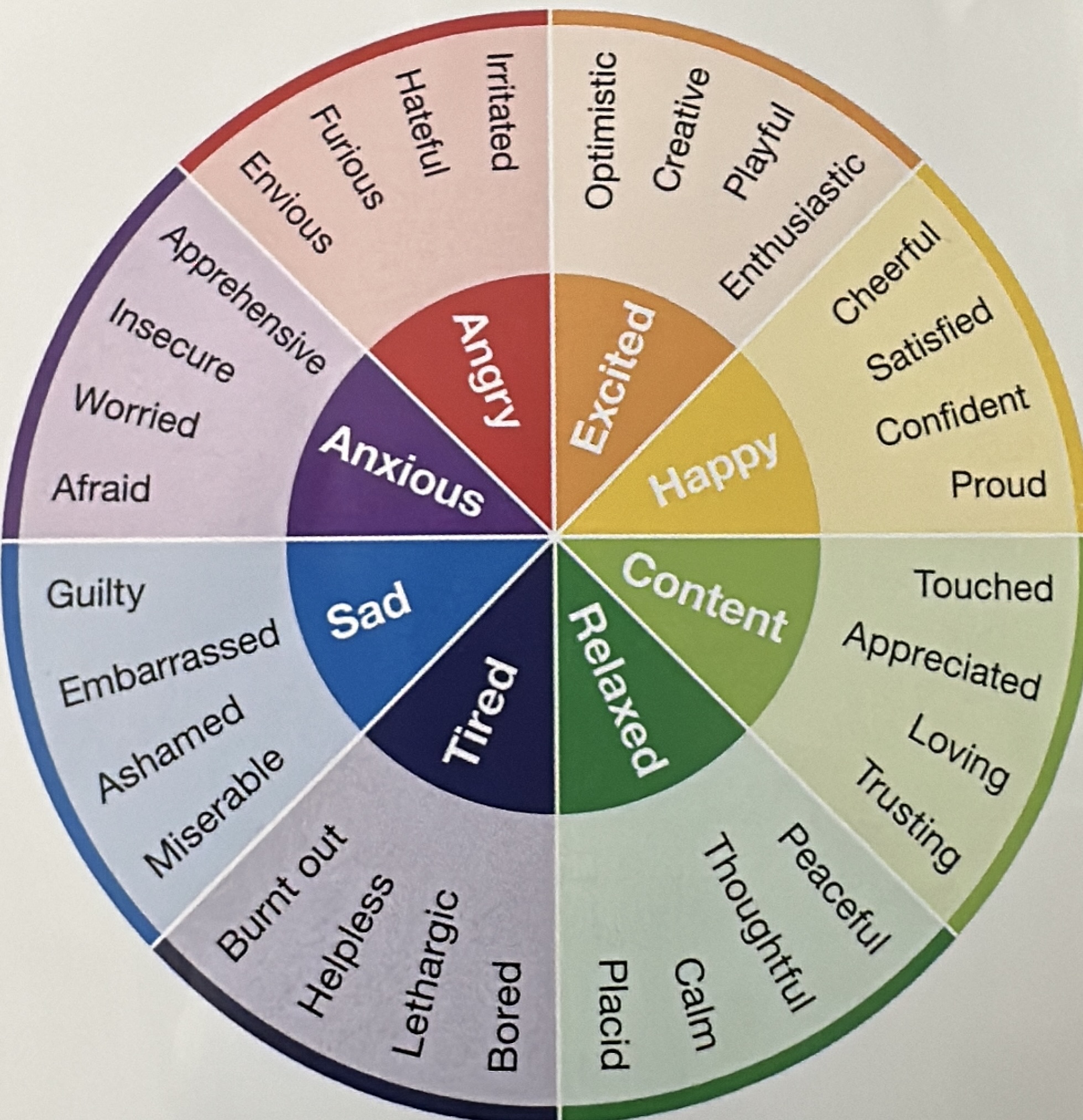✏️ A Journaling Practice Using the Feelings Wheel

Do You Tune Into Your Emotions? – A Journaling Practice Using the Feelings Wheel
“You have to name it to tame it.” – Dr. Dan Siegel
Many of us often move through our days without checking in with ourselves. We may feel “off,” “fine,” or “tired,” but those words barely scratch the surface of our emotional landscape. That’s where the Feelings Wheel comes in. It is a simple but powerful tool to help you better understand and label your emotions, paving the way for deeper awareness and emotional growth. For me, it has brought awareness to the range of feelings that can occur and those that exist when times are difficult. It also raises awareness of a good emotional state for me and its requirements.
What Is the Feelings Wheel?
This was initially created by the psychologist Robert Plutchik in the 1980s, but various variations exist, such as the wheel created by Dr. Gloria Willcox. All provide a visual guide that helps you clearly identify your emotions. My feelings wheel of preference was made by JCA global.com in their work on Emotional Intelligence. It comprises eight core feelings in the centre that branch out into more specific emotional states. Using this wheel, you can move from vague emotional responses to meaningful insights about your inner world.

The Journaling Practice: From Emotion to Clarity
Here’s a simple journaling structure to help you connect with yourself using the Feelings Wheel:
Step 1️⃣: Check In with the Feelings Wheel
Start your journaling practice by looking at the Feelings Wheel.
Ask yourself:
• How am I feeling right now?
• Where do I see myself on this wheel?
Take a few deep breaths and circle or note the words that resonate with your current emotional state. Be honest—there’s no right or wrong answer here.
Step 2️⃣: Practice Gratitude
Now write down three things you’re thankful for. These could be moments, people, experiences, or simple pleasures.
Gratitude helps shift your mindset, lowers stress levels, and brings focus to the positive, especially if you’re feeling stuck in a low or heavy state.
Step 3️⃣: Reflect on the Day
Write freely about:
• What has happened today so far
• Anything that’s weighing on you or lifting you
• Observations about your habits, relationships, or thoughts
This part isn’t about perfection but processing, unpacking, and reflecting.
Step 4️⃣: Revisit the Feelings Wheel
After writing, take another look at the Feelings Wheel.
Ask yourself:
• Has anything shifted?
• Do I now feel something different or deeper than before?
• What does that tell me about what I need right now?
This simple step offers a moment of emotional grounding and shows you how your internal state can shift with awareness and reflection.
Why This Practice Matters
By pairing the Feelings Wheel with journaling and gratitude, you’re giving yourself a structured way to:
💎 Recognise and name your emotions
💎 Connect gratitude with emotional regulation
💎 Reflect on your experiences in a healthy, supportive way
It’s a daily habit that builds emotional literacy, strengthens resilience, and supports personal growth.
Your emotions are valid. They hold clues, insights, and reminders of what matters most to you. Tuning in with intention creates space for calm, clarity, and connection.
So the next time you reach for your journal, start with this:
🙌 How am I feeling right now?
We don't ask ourselves this often enough. Try it and let me know how it works for you.



